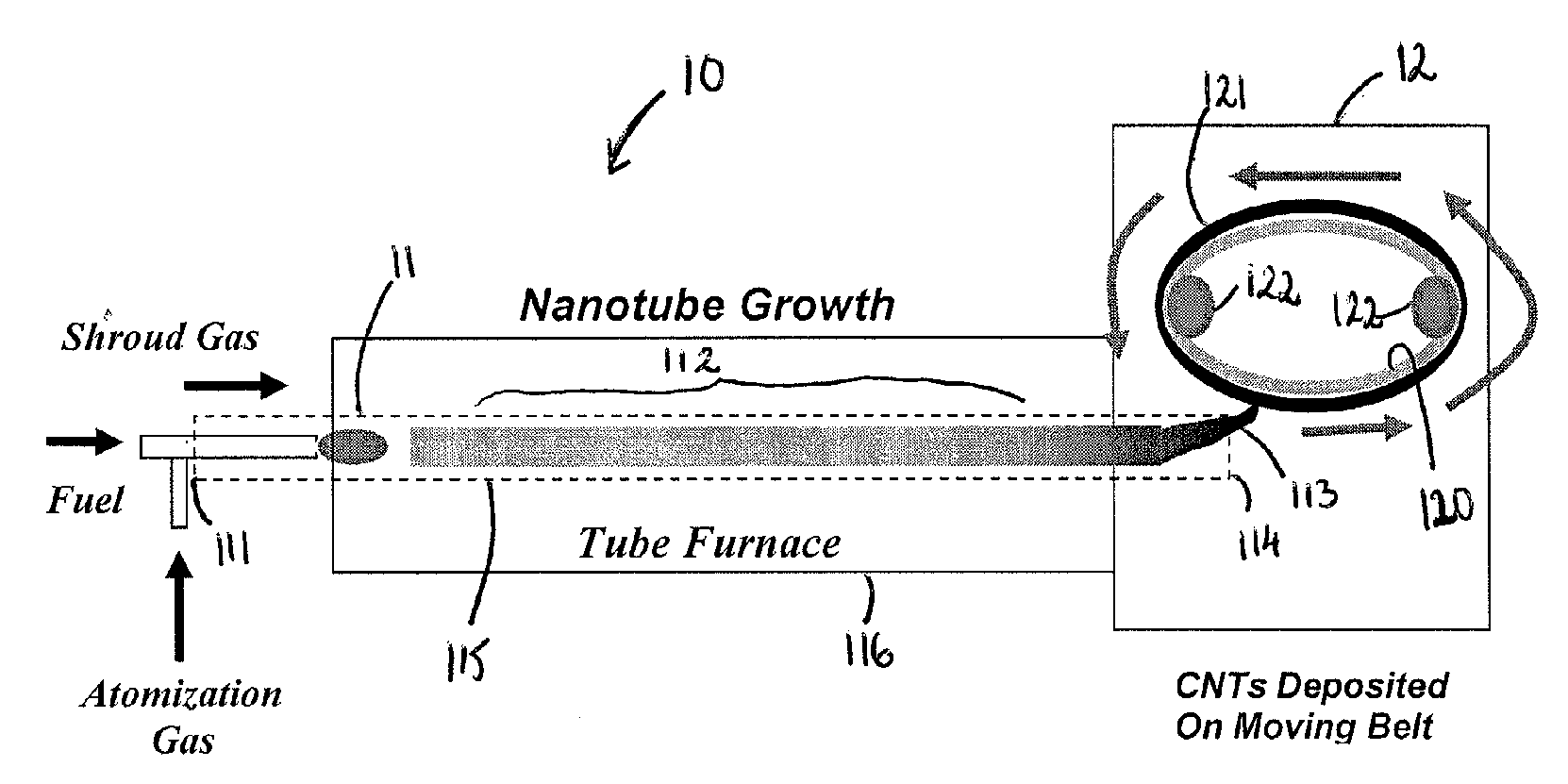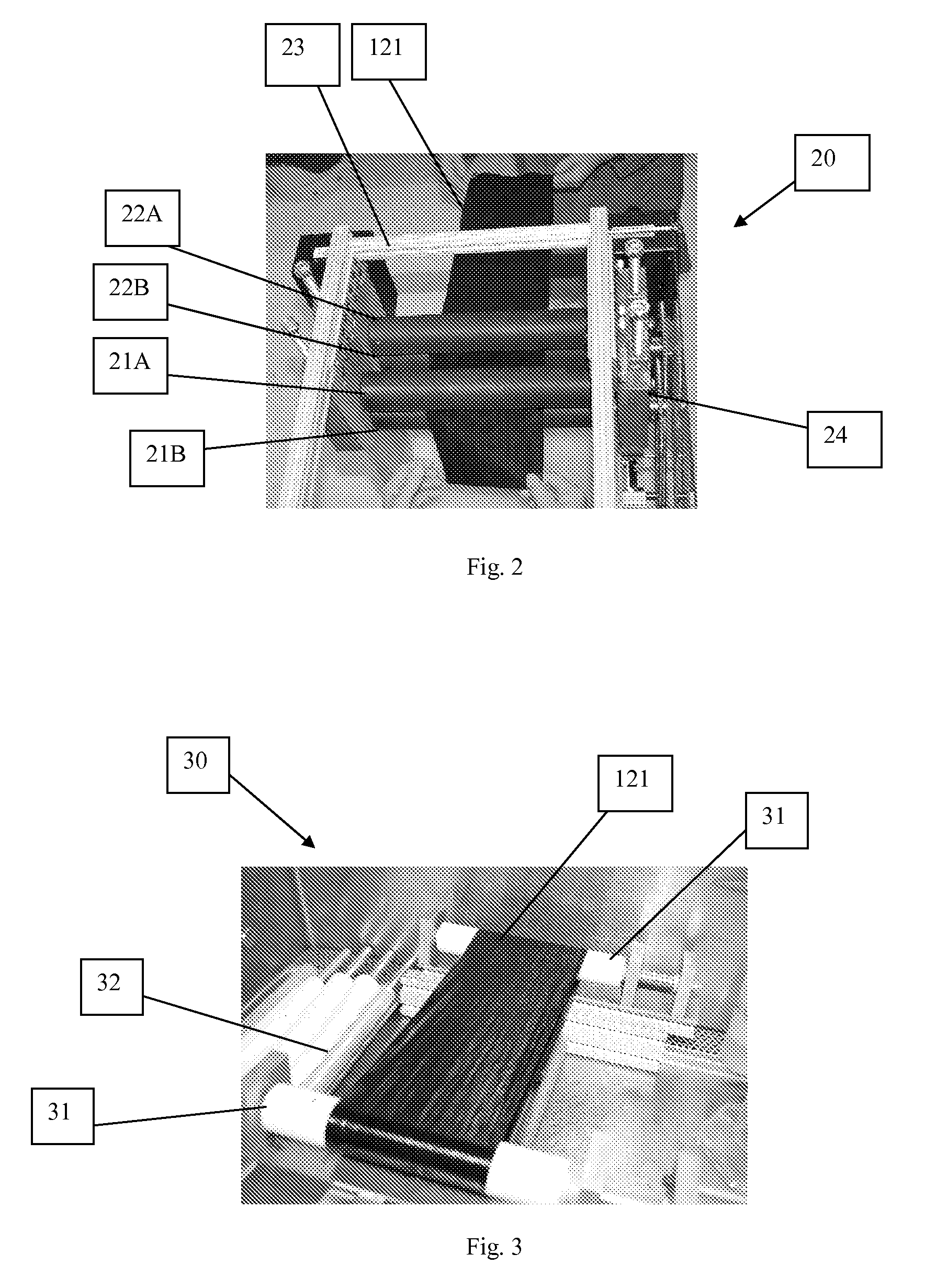Chemically-Assisted Alignment of Nanotubes Within Extensible Structures
a nanotube and extensible technology, applied in the field of nanotube substantially aligning, can solve the problems of cumbersome nanotube alignment issues prior to the formation of extensible structures, inconvenient fabrication process, and inability to align nanotubes well, etc., to achieve the effect of increasing electrical and thermal conductivity and enhancing conta
- Summary
- Abstract
- Description
- Claims
- Application Information
AI Technical Summary
Benefits of technology
Problems solved by technology
Method used
Image
Examples
example i
[0051]A single wall carbon nanotube non-woven sheet was produced by CVD deposition on a moving belt. This non-woven sheet (i.e., extensible structure) had dimensions of about 8 inches by about 36 inches, with an area density of about 1 mg / cm2. The approximate volumetric density of this non-woven sheet was about 0.2 g / cm3. This non-woven sheet was mounted in system 30 of FIG. 3, and sprayed with a solution of DMF and ZetaSperse. The solution of DMF and ZetaSperse was allowed to soak in for a period of about 10 minutes. The non-woven sheet was then stretched on system 30 at an elongation rate of about 1 inch / hr at a rotation rate of approximately 7 rpm.
[0052]Following the stretching, the non-woven sheet was soaked in acetone, allowed to air dry, and then baked in air at a temperature of 350° C. for about 3 hours.
[0053]Samples of this stretched non-woven sheet were taken from which property measurements were made. The results of the measurements are provided in Table 3.
TABLE 3PropertyB...
example ii
[0054]A partially spun yarn made of single wall carbon nanotubes was produced by a CVD process, similar to that described in U.S. patent application Ser. No. 11 / 488,387, incorporated herein by reference.
[0055]With reference now to FIG. 5, under steady-state production using a CVD process of the present invention, nanotubes 51 may be collected from within a synthesis chamber 52 and a yarn 53 may thereafter be formed. Specifically, as the nanotubes 51 emerge from the synthesis chamber 52, they may be collected into a bundle 54, fed into intake end 55 of a spindle 56, and subsequently spun or twisted into yarn 53 therewithin. It should be noted that a continual twist to the yarn 53 can build up sufficient angular stress to cause rotation near a point where new nanotubes 51 arrive at the spindle 56 to further the yarn formation process. Moreover, a continual tension may be applied to the yarn 53 or its advancement into collection chamber 58 may be permitted at a controlled rate, so as t...
PUM
| Property | Measurement | Unit |
|---|---|---|
| temperature | aaaaa | aaaaa |
| temperature | aaaaa | aaaaa |
| temperature | aaaaa | aaaaa |
Abstract
Description
Claims
Application Information
 Login to View More
Login to View More - R&D
- Intellectual Property
- Life Sciences
- Materials
- Tech Scout
- Unparalleled Data Quality
- Higher Quality Content
- 60% Fewer Hallucinations
Browse by: Latest US Patents, China's latest patents, Technical Efficacy Thesaurus, Application Domain, Technology Topic, Popular Technical Reports.
© 2025 PatSnap. All rights reserved.Legal|Privacy policy|Modern Slavery Act Transparency Statement|Sitemap|About US| Contact US: help@patsnap.com



